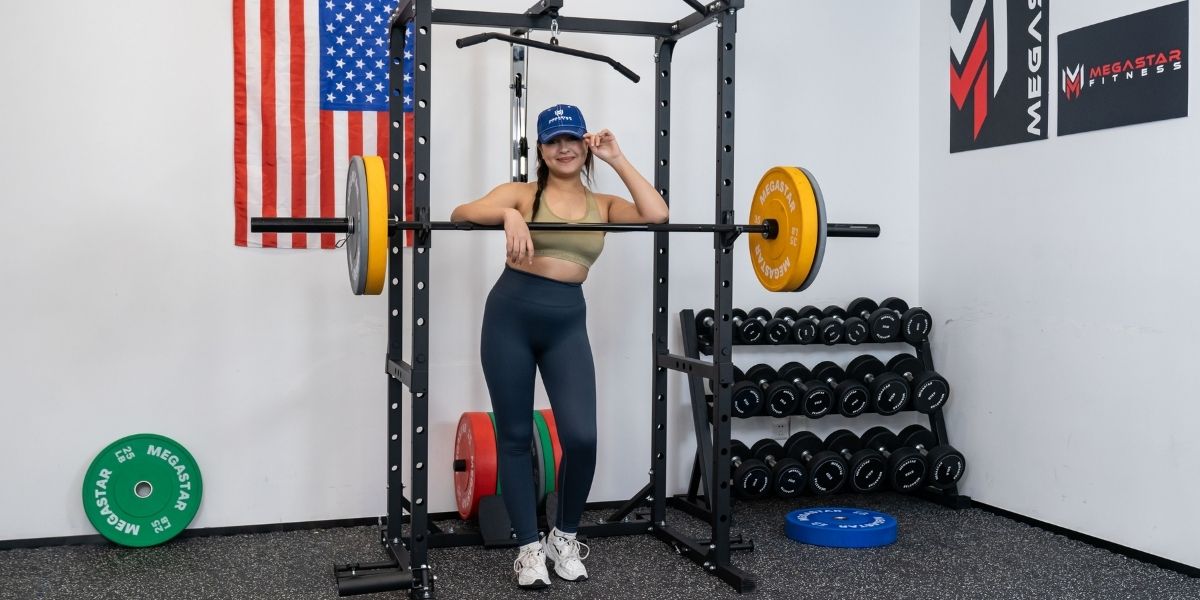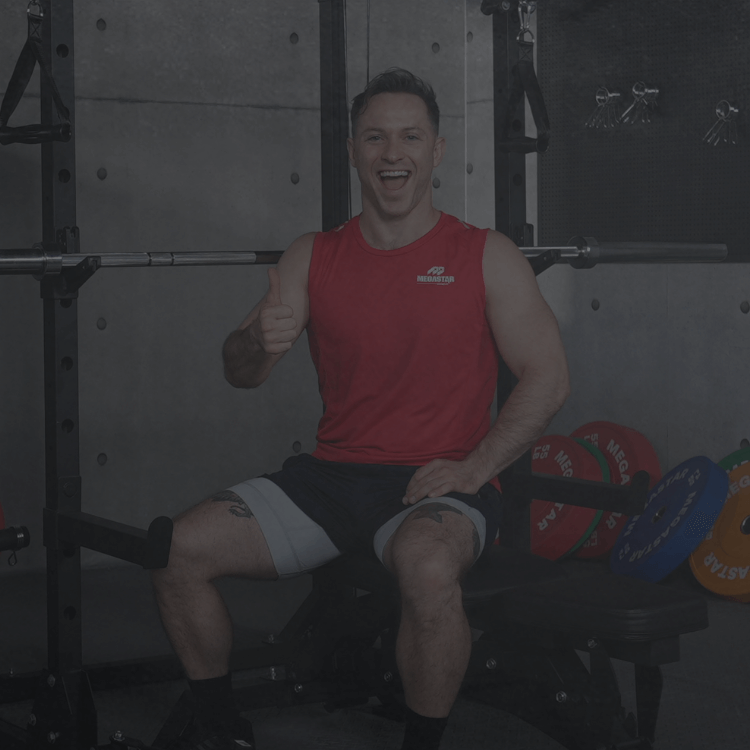If you’ve ever walked up to a Smith machine, stared at the bar on those rails, and thought, “I have no idea what to do with this,” you’re not alone. A lot of people worry about using it wrong, getting hurt, or just looking clueless in a busy gym. The good news: once you understand a few basics, the Smith machine becomes one of the easiest and safest tools to use, especially if you train alone.
In this guide, you’ll learn how to use a Smith machine step by step: how to set it up, how to use it for your main exercises, and how to plug it into a simple weekly routine. You’ll also see where it shines compared with a regular barbell.
What a Smith Machine Is and Why It Helps
A Smith machine is a barbell fixed to steel rails, allowing only vertical or slightly angled movement. You rotate your wrists to unhook and hook the bar, and you can set safety stops to catch failed reps. This simple track gives you more control than a free barbell, which is why beginners, home lifters, and anyone training without a spotter can benefit. It’s not a shortcut. It’s a tool that reduces balance demands so you can focus on form and muscle tension.
Get Comfortable With the Smith Machine First
Before you even think about adding weight, take a minute to get familiar with the machine. It might look complex, but it’s actually very simple.
Identify the Main Parts: Bar, Rails, Hooks, Safeties, Plate Pegs
Here’s a quick breakdown of what you're looking at:
- The Bar: This is the barbell you'll be lifting. Crucial: This bar is not 45 pounds like a standard Olympic barbell. It's often "counterbalanced," meaning it can weigh as little as 6-15 pounds. Look for a sticker on the machine that lists the "starting resistance."
- The Rails: The two vertical tracks that the bar slides up and down on.
- The Hooks: The J-shaped hooks attached to the bar. These are what lock the bar onto the rails. You engage and disengage them with a simple flick of your wrists (usually rotating the bar back or forward).
- The Safety Stops: These are the two adjustable horizontal bars or pegs at the bottom. These are your most important safety features.
- The Plate Pegs: The spindles on the bar (or sometimes on the machine's frame) where you load your weight plates.

Set the Bar Height
First, you need to set the bar to a comfortable starting position for your specific exercise.
- Get in position: Stand under the bar (for a squat) or lie on the bench (for a bench press) without any weight on the bar.
- Adjust the height: Rotate your wrists to unhook the bar. Move it up or down to the correct starting height.
For Squats: The bar should be at shoulder height, just low enough that you only need to perform a slight "mini-squat" to get under it and un-rack it.
For Bench Press: The bar should be at a height you can reach with a slight elbow bend. You shouldn't have to fully extend or "reach" for it, as this can put your shoulders in a bad position.
3. Lock it in: Rotate your wrists to hook the bar back onto the rails at that new height.
Set the Safety Stops
Do not skip this step. This is what makes the Smith machine so safe. The safety stops are your personal spotter.
- Find your "bottom" position: Get into the lowest point of your exercise with the empty bar. For a squat, this is the "hole" (thighs parallel to the ground). For a bench press, this is when the bar is just above your chest.
- Position the stops: Move the safety stops (they usually pull out and slide) to a position just below that lowest point.
- Test it: Lower the empty bar all the way down until it rests on the stops. It should allow you to get a full range of motion but before it would pin you (e.g., it rests on the stops, not your chest).
Load the Bar Safely
Loading the bar is simple, but there's a right and a wrong way.
- Practice Empty: Before adding any weight, practice your exercise with just the bar. Get a feel for the fixed path and, most importantly, practice the wrist-flick motion to un-rack and re-rack the bar. Do it 10 times until it feels like second nature.
- Load Evenly: This is critical. Add one plate to one side, then add the exact same plate to the other side. Never load one side all at once. This can torque the bar and cause it to jam or get stuck.
- Use Clips: Yes, even on a Smith machine. Plates can rattle or slide during a set, which is distracting. Clips keep everything tight and secure.
Use a Smith Machine for Key Exercises
The Smith machine is incredibly versatile. Here’s a look at how to use it for the most common workouts.
Using a Smith Machine for Leg Workouts
Squats: Great for targeting the quads or glutes based on foot placement. Because you don't have to balance, you can really focus on squeezing the target muscle.
Lunges / Split Squats: This is one of its best uses. Balancing during a dumbbell lunge can be tricky. The Smith machine provides full stability, so you can focus 100% on pushing with your working leg.
Romanian Deadlifts (RDLs): By forcing a straight path, it can be a good tool for learning the hip-hinge motion. Focus on pushing your hips straight back and keeping your back flat.
Calf Raises (Standing): Allows you to safely load up heavy weight to build your calves, which often respond well to high loads.
Using the Smith Machine for Chest Workouts
Bench Press (Flat, Incline, Decline): This is a perfect exercise for training to failure safely.
Setup: Roll a bench into the machine. Line it up so the bar will touch your mid-chest (nipple line) at the bottom of the rep.
Grip: Start with a grip slightly wider than shoulder-width.
Safety: Set the safety stops just an inch or so above your chest. This way, if you fail, the bar rests on the stops, not on you.
Using the Smith Machine for Back Exercises
Bent-Over Rows: You can hit your upper and mid-back with rows on the Smith.
Inverted Rows: A fantastic bodyweight exercise.
Setup: Set the bar low, around hip height.
Movement: Lie on the floor underneath it, grab the bar with an overhand grip, and (keeping your body in a straight plank) pull your chest up to the bar.
Using the Smith Machine for Shoulder Workouts
Overhead Press (OHP): Can be done seated or standing. A seated OHP is very stable and allows you to strictly target the deltoids.
Shrugs: The Smith machine is king for shrugs. It lets you load up far more weight than you could comfortably handle with dumbbells, which is great for building big traps.
Recommended Home Gym Option: Megastar Smith Machines

Now that you understand the benefits, you can see why Smith machines are a cornerstone of home gyms. If you're training alone, that built-in safety is everything.
When looking for a home unit, you'll see that modern designs have evolved. You're not just buying a simple Smith machine anymore. For example, the Megastar Fitness line combines a Smith machine with a functional trainer (cable pulleys), a power rack, and a lat pulldown station. The all-in-one Smith machine is incredibly space-efficient and gives you the safety of a Smith machine plus the versatility of cables and free weights, essentially packing an entire commercial gym into a single footprint.
Final Thoughts: Build Confidence with Smith Machine
The Smith machine isn’t a shortcut; it’s a tool. When you set the bar height, safeties, and stance correctly, it lets you push yourself safely, learn good patterns, and focus tension where you want it. Start light, practice the hooks and safeties, and build up week by week. Confidence comes quickly when the setup is right and the steps are simple.
FAQs About Using the Smith Machine
Can I build muscle with just a Smith machine?
Absolutely. Muscle growth responds to three main things: tension, volume, and progressive overload. You can easily apply all three using a Smith machine for your main compound lifts. If your gym only had a Smith machine and some dumbbells, you could build an incredible physique.
Can beginners use the Smith machine?
Yes, it's one of the best pieces of equipment for beginners. It removes the fear of balancing the bar or getting stuck under a failed rep, allowing you to focus purely on learning the movement and feeling the right muscles work.
Is a Smith machine safer than free weights?
Mechanically, yes. The ability to rack the bar at any time and the adjustable safety stops make it objectively safer for lifting to failure without a spotter. However, the fixed path can cause joint strain for some people if their body doesn't align with the machine's path. Always listen to your body—if you feel joint pain, adjust your form.
How much is 225 lbs on a Smith machine?
This is a common mistake! 225 lbs on a free barbell is the 45-lb bar plus two 45-lb plates on each side. A Smith machine bar is not 45 lbs; it's counterbalanced and usually weighs 10-20 lbs. To lift 225 lbs on a Smith machine, you must first know the bar's starting weight. If the bar is 15 lbs, you would need to add 210 lbs in plates (105 lbs per side) to reach a 225-lb total.
Related Reading: How Much Weight Is 225 On A Smith Machine







